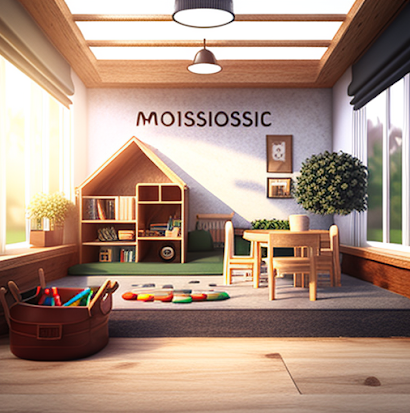Montessori at home
If you're interested in implementing Montessori principles at home, here is a starting guide to help you get started:
Understand the Montessori philosophy
Create a prepared environment
One of the key elements of a Montessori environment is that it is a prepared environment. This means that the space is designed to be safe and conducive to learning, with materials that are accessible to the child and that are tailored to their developmental needs.
Use real-life materials
Montessori education emphasizes the use of real-life materials in the learning process. This means that instead of relying on worksheets or textbooks, children are encouraged to explore and learn through hands-on experiences with materials such as blocks, puzzles, and art supplies.
Encourage independence
Montessori education is built on the principle of encouraging independence in children. This means that instead of directing their learning, you should allow them to explore and discover on their own. Encourage your child to make choices, complete tasks on their own, and ask questions when they need help.
Respect the child's pace
Montessori education is built on the principle of following the child's natural pace of development. This means that instead of expecting children to learn at the same pace or in the same way, you should respect their individual needs and allow them to learn at their own pace.
Use observation
One of the key principles of Montessori education is that the child should be observed in their work to understand their needs and interests. This observation will help you understand your child's abilities, interests and learning style, and adjust the environment and materials to better suit their needs.
Practice patience and consistency
Montessori education requires patience and consistency from the adult. Children learn at their own pace and in their own way, and it's important to be patient and consistent in your approach to support their growth.
It's important to remember that Montessori is not a rigid method, it's a philosophy that encourages children to learn through exploration and discovery. The above guide will help you create a Montessori environment at home, but always keep in mind that every child is unique and may need a different approach.
It is always good to do more research and consult with experts if possible so that you can create an environment that is tailored to your child's needs and interests.

Comments
Post a Comment